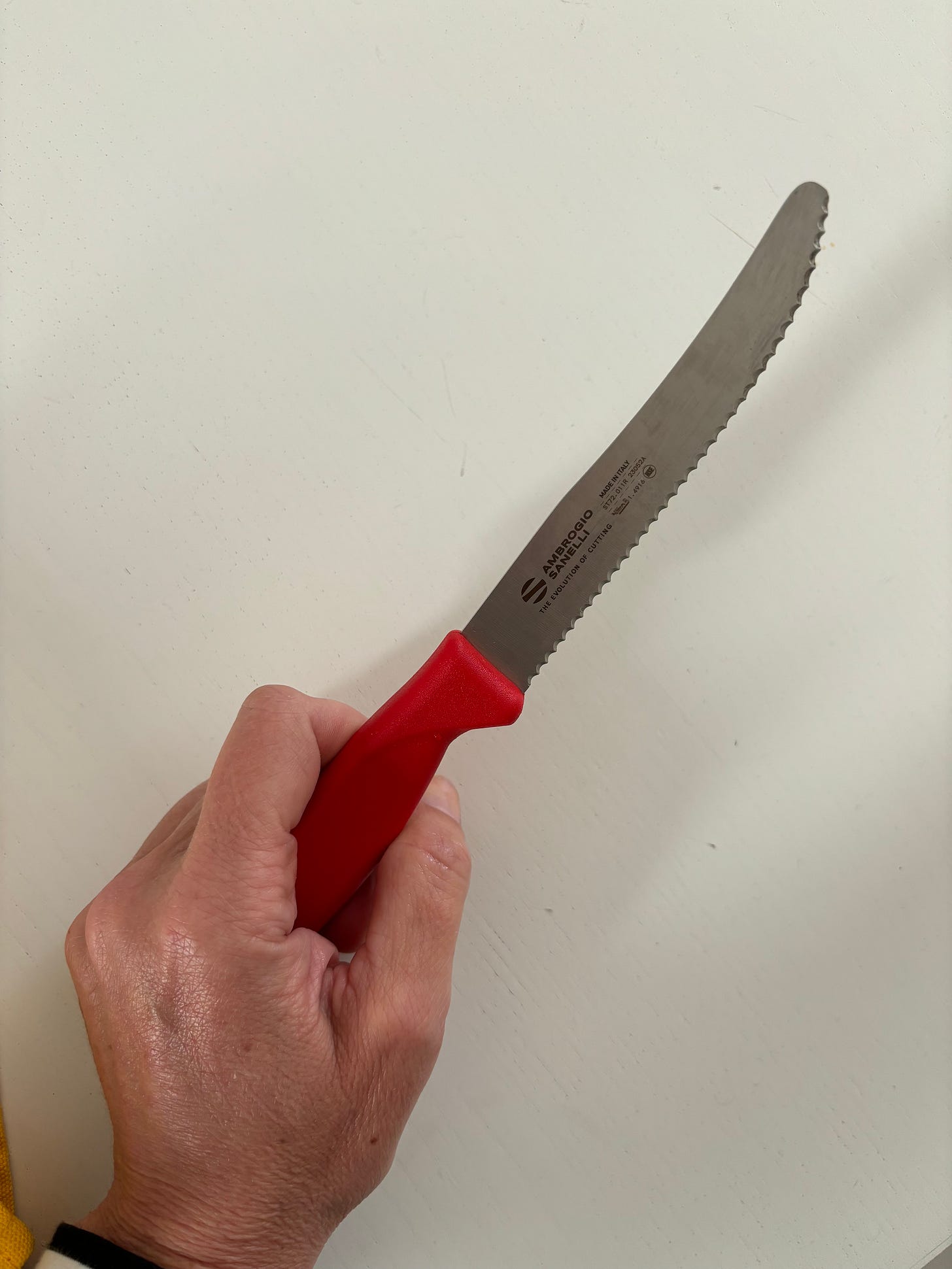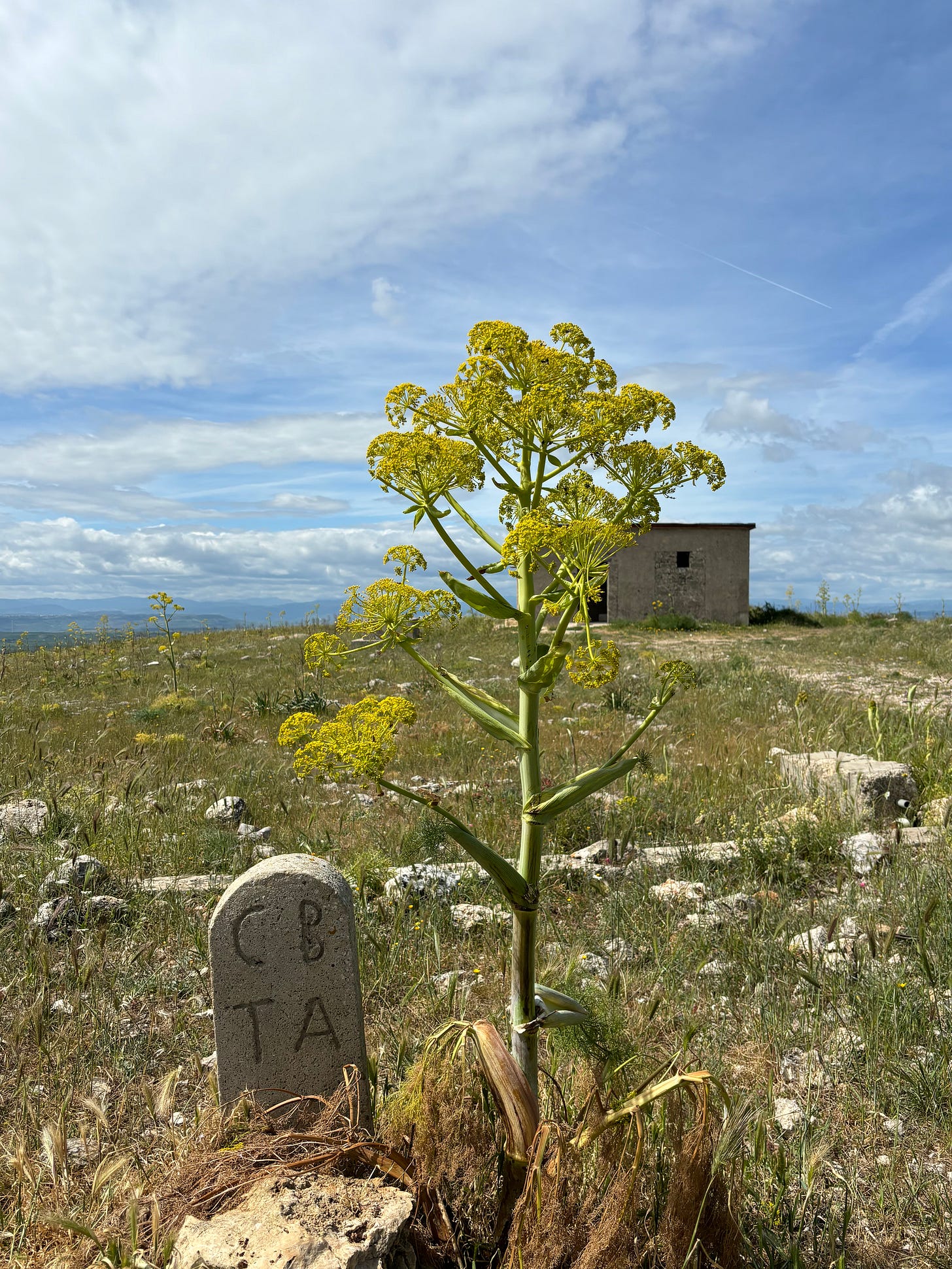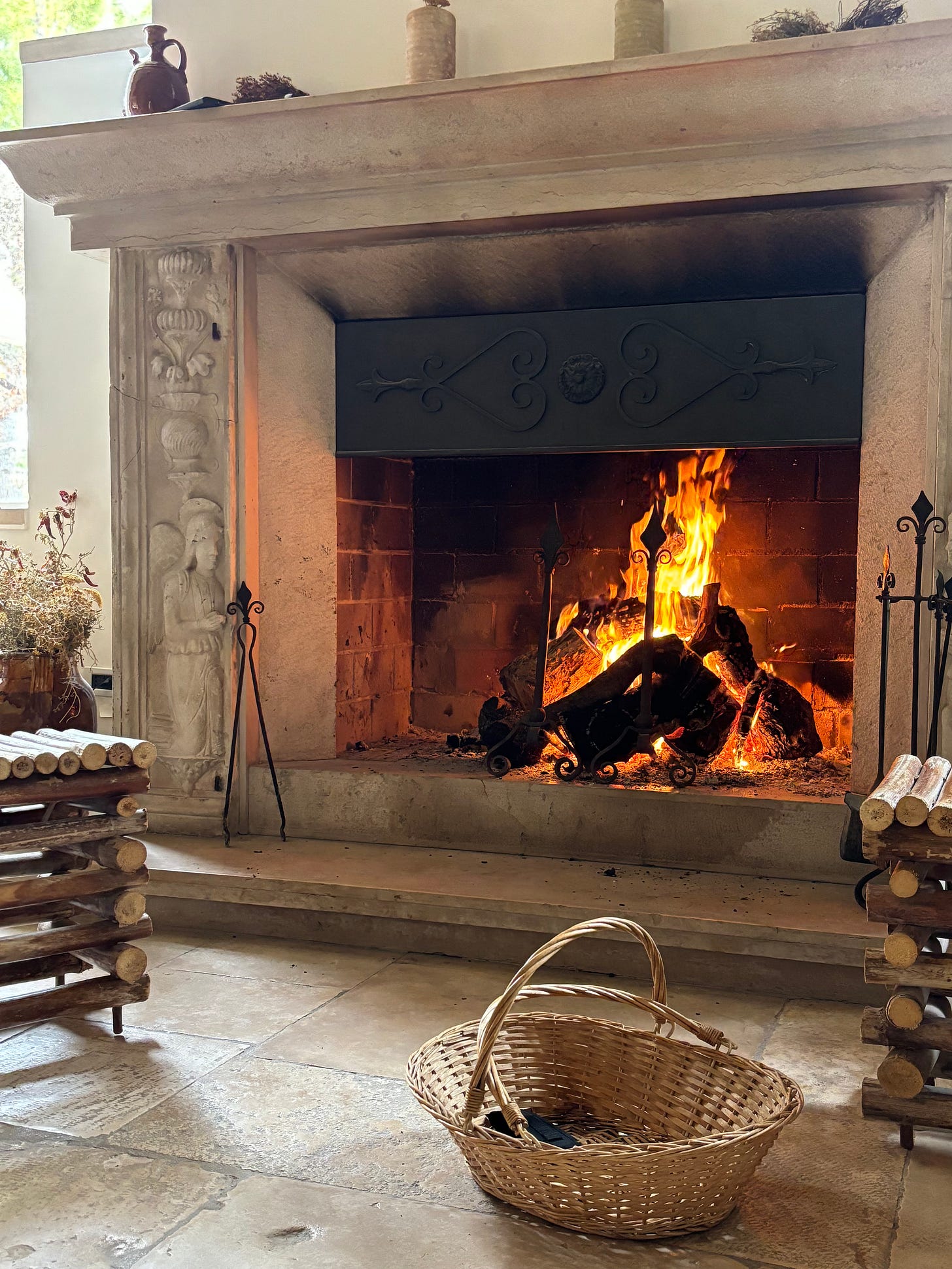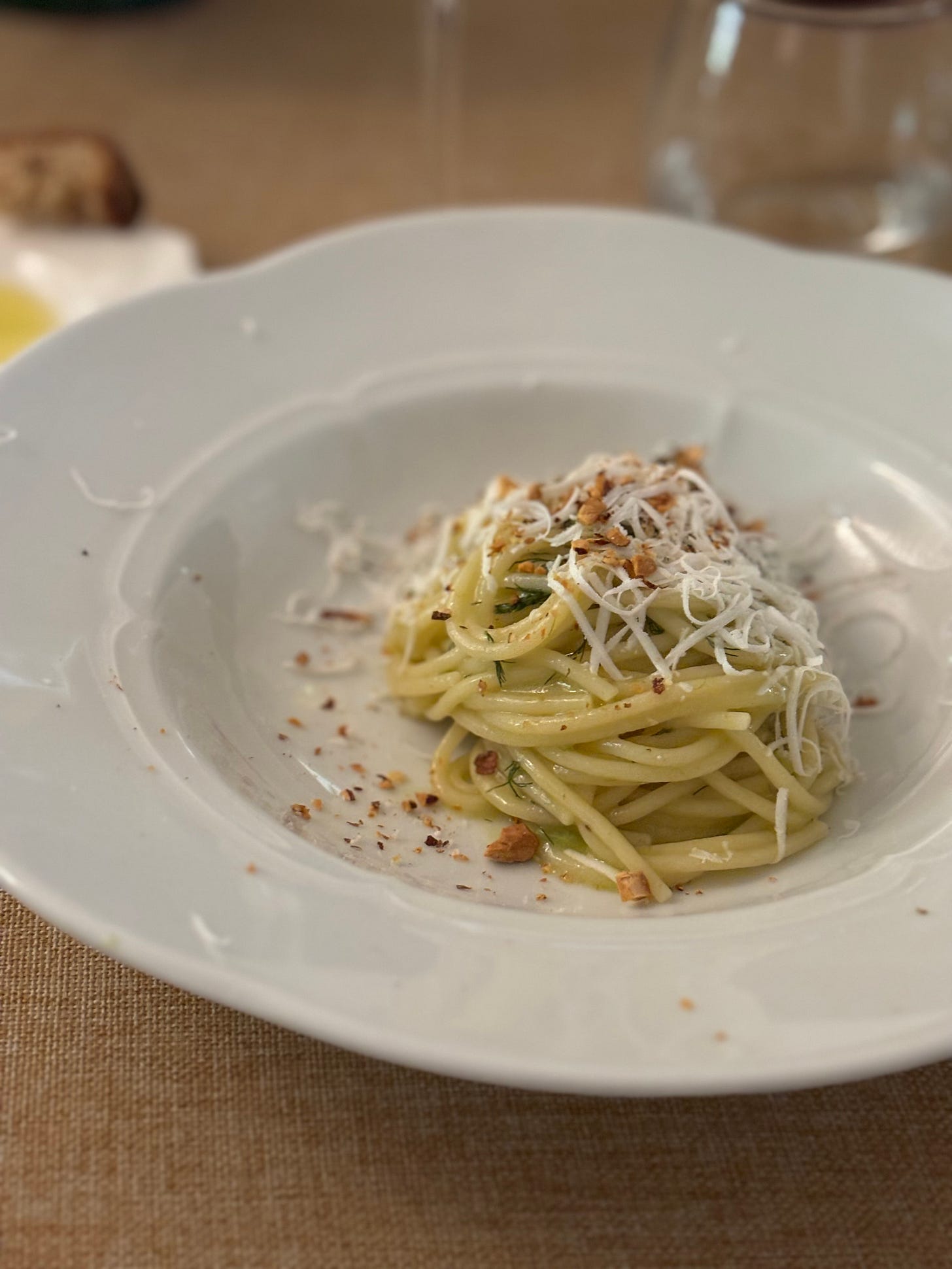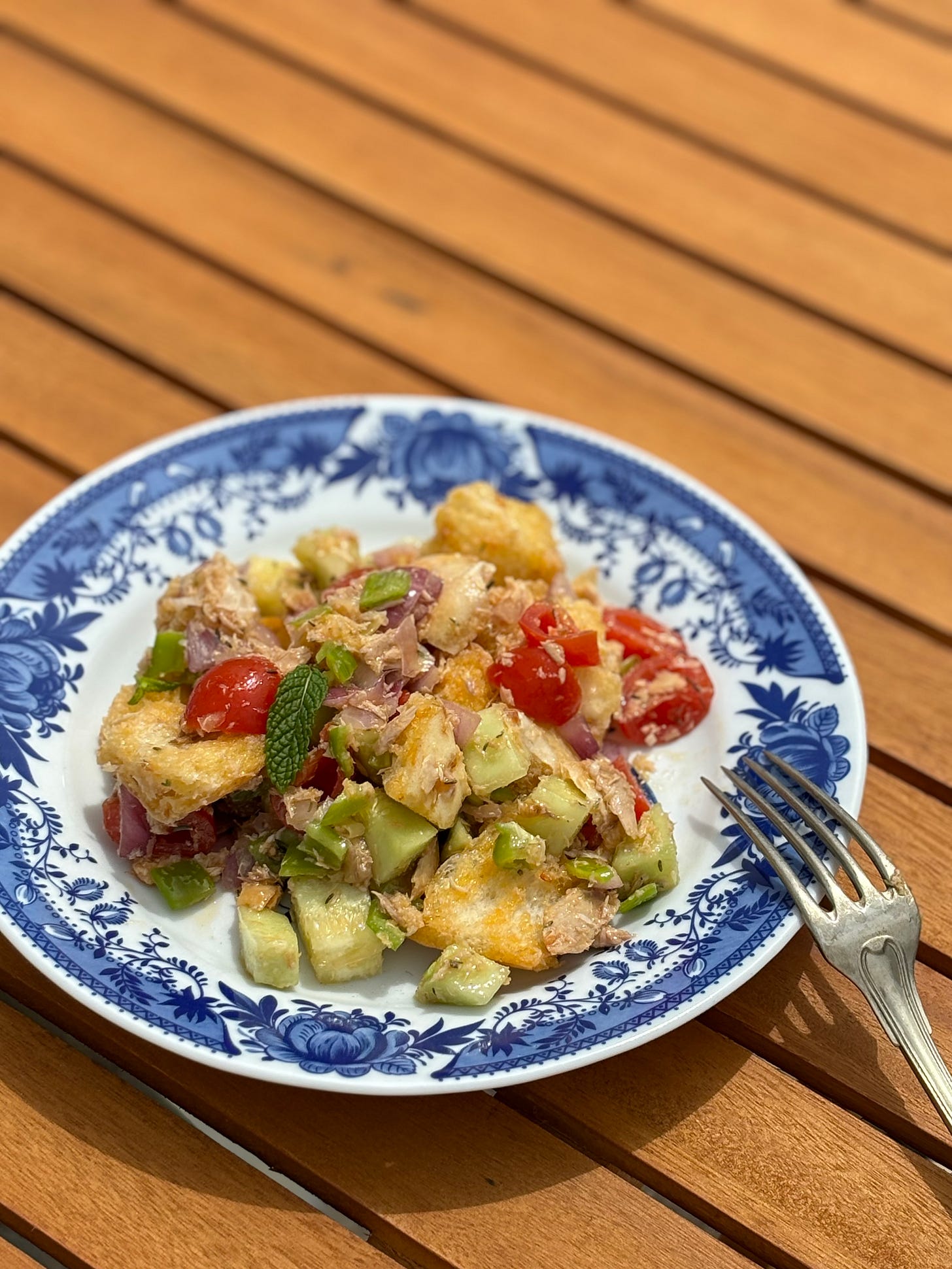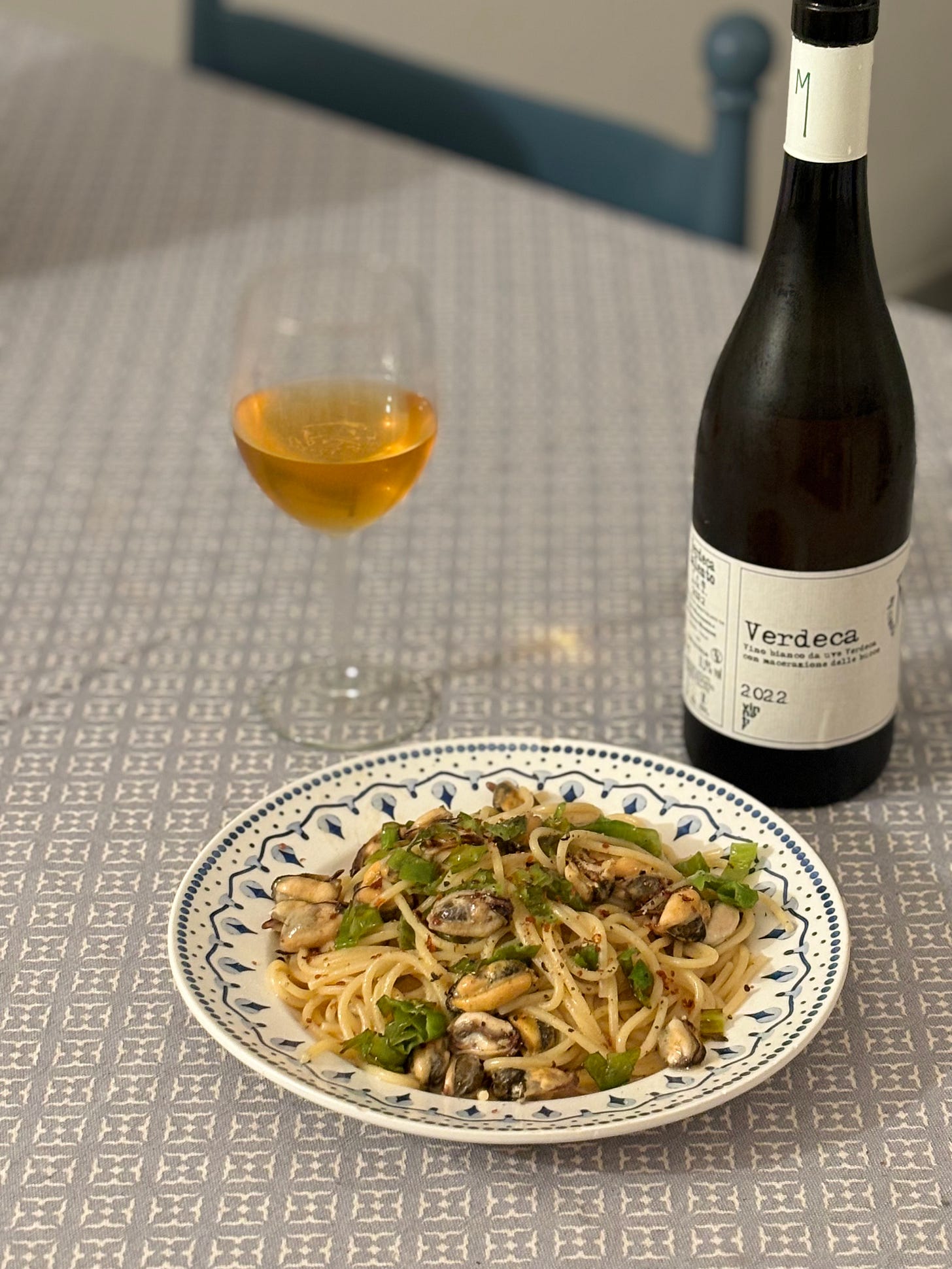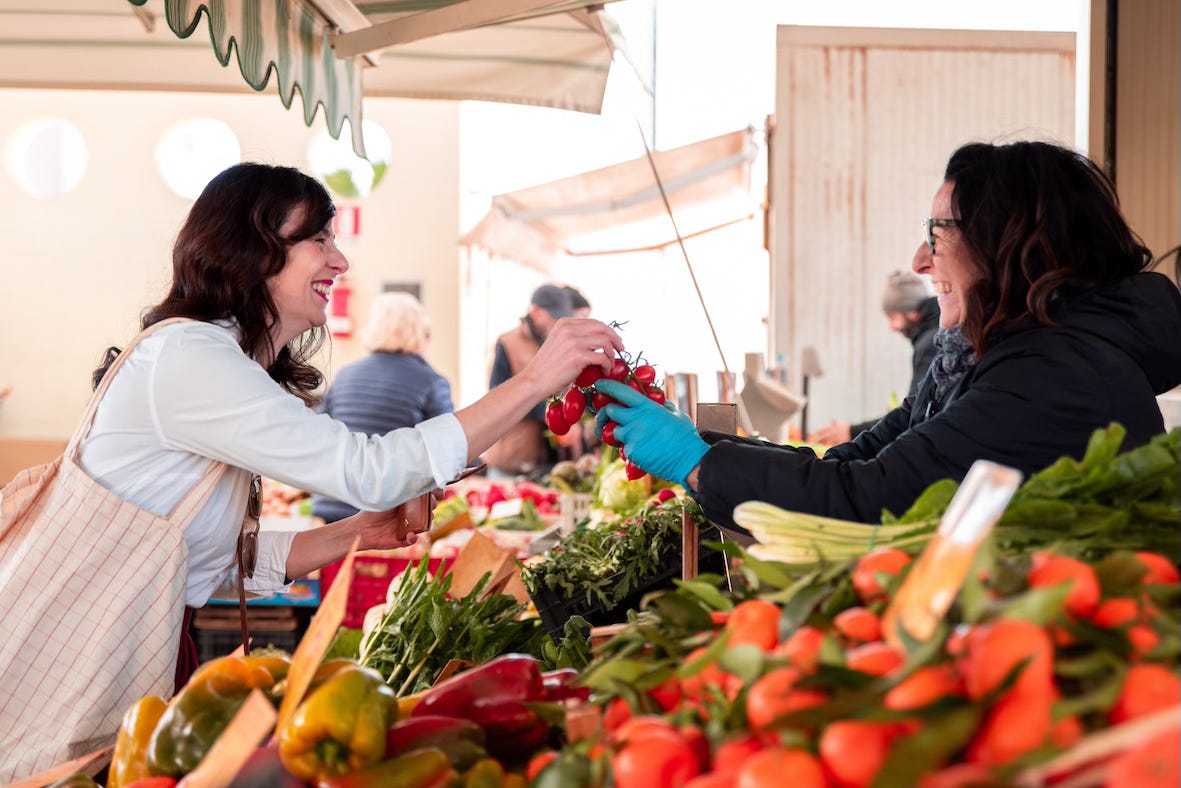Foraging in the wild Murgia
In search of edible plants in the steppe right at the heart of Puglia
(🇮🇹 Ascolta l’articolo in Italiano cliccando su article VoiceOver qui sopra ⬆️)
I'm in the "balsamic phase" of my writing.
To use a comparison with the world of medicinal herbs, where the balsamic time is when the plant is richest in active principles, my writing these days is enriched with more intense words, and the desire to tell you what my eyes see is stronger.
And nothing ignites my imagination like walking through the Apulian countryside in search of wild herbs.
I've been doing it since I was little - I was fortunate to have two grandmothers who took me hunting for wild chicory, lampascioni, chamomile, and small wild apples (azzaruoli) in the fields around the Forest of Mercadante.
In Sweden, nothing rejuvenated me more than a day spent mushroom foraging, training my eyes to the velvety colors of porcini mushrooms, moving the damp moss to pick chanterelles.
When I saw that Cucina Villana from Ruvo di Puglia offered a foraging excursion in the company of Francesco Montaruli and the legendary Ciccillo, I didn't need to be told twice.



Ciccillo is an tireless walker of the Murgia, with Garibaldi-style mustache, a visor cap, rough and scratched hands, who, with a serrated knife and a pickaxe, scans the Alta Murgia National Park every day in search of the earth's treasures - cardoons, wild fennel, cardoncelli mushrooms or ferula mushrooms - to entrust to the loving hands of Vincenzo Montaruli who, in the kitchen of Villa Fenicia, transforms them into vegetable dishes balanced between flavors of the Murgia and New Nordic techniques.


They call it ethnobotanical cuisine: on one hand, the plants (botany), on the other hand, ethnology (the techniques, beliefs, rituals that those plants contain).
After all, we are born gatherers, before we are farmers. And in Puglia more than ever, a semi-arid region (the name Puglia comes from Apulia, a pluvia, meaning without rain), learning to recognize edible wild herbs for years has been more than a resource, but true survival.
(The grandma’s knife we used to forage. For my colleague Rosetta Costantino it is a must have in the kitchen. Read more here)
The territory of the Alta Murgia National Park is a pseudo-steppe, arid, rugged like the crust of Altamura PDO bread, beaten by the winds: it is no coincidence that the vegetation is low and thorny, with the exception of the ferula plants (a poisonous plant of the Umbelliferae family similar to wild fennel) that in spring stand tall and indifferent with their yellow plumes.
What is striking are the scents, released with every step on the hard ground: the minty scent of the acino pugliese, the herbaceous and peppery scent of wild rucola, the floral scent of thyme, velvety sage, and the licorice and dill scent of the wild fennel.
And then there are the cardoons (cardi) - Francesco calls them the octopus of the Murgia: spiny cardoon (cardo spinoso), cardo mariano (legend has it that the Madonna hid under this plant while fleeing from Egypt), the "calca treppola" cardoon (whose name means heel prick, from the root that tastes like carrot).
Ciccillo, oblivious to the thorns, with quick movements of his fingertips - thumb, index, middle - he unfurls them, peels them, disarms them. I find them a few hours later on the plate, harmless and tamed, covered in béchamel and bread crust.
From the steppe to the table, the scents of the Murgia that we carry attached to our pants, under our soles, knotted in our hair together with dandelion puffs, accompany us in the large room with star vaults, where olive wood burns in the fireplace.
The light is subdued, like that of a stable, illuminated by a few candles. We slowly eat the fields we have walked through: the wild fennel twirls around a tangle of spaghetti and lets itself be covered with fresh and salty ricotta cheese; we crunch on green almonds fermented in milk, lampascioni in oil, goat cheeses, and natural wines (the wine pairing is with Morasinsi Bianco, an aromatic blend of Moscato and Bombino Bianco from the Morasinsi cellar).
A flourless dessert with bitter almonds, drinking the shepherds' tea (made by infusing the acino pugliese, the Murgian mint for 10 minutes), reminds us that the Murgia is a place of the soul where, even if you don't gather anything, you gather yourself.


Two recipes I loved cooking this month
Apulian Cialledda with tonnetto alletterato (bonito tuna)
Lucrezia, a childhood friend of mine, gave me for my birthday a jar of tonnetto alletterato in oil caught by her dad, a retired hotel director and professor at the hotel management institute and, it is said, a fantastic cook :)
Bonito tuna (Euthynnus alletteratus) is a type of local tuna, with a smaller and less streamlined body and firm, compact flesh.
Since I had a piece of bread left over, now stale, instead of grinding it to make breadcrumbs, I softened it in cold water for a few minutes to make a cialledda, Apulian bread salad that is very popular in summer. Very refreshing, also due to the presence of the barattiere, our local cucumber (although it is more correct to include it in the melon family), round and crunchy.
Barattiere and alletterato tuna can be replaced with a cucumber and tuna or mackerel.
Recipe for 1 person
150 g of stale bread cut into cubes
4-5 cherry tomatoes
1 small red onion
1 slice of alletterato tuna in oil
1 small cucumber
1 green pepper
fresh thyme
fresh mint
apple cider vinegar
oil
salt
Soak the bread in cold water for a few minutes until softened.
Meanwhile, halve the cherry tomatoes, slice the onion, cut the pepper into strips, and dice the cucumber.
Drain the softened bread and squeeze out the excess water, then transfer it to a bowl.
Add the tomatoes, onion, cucumber, pepper, and tuna, dress with oil, a few drops of vinegar, salt, and thyme, and mix everything together to combine the flavors
Let the cialledda rest for at least 1 hour in the fridge before serving, so that the bread absorbs all the flavors of the other ingredients. Serve with a handful of fresh mint.
Spaghetti with mussels and green peppers
I'm a fan of cornetto green peppers, which I could eat endlessly: grilled, baked, fried, sautéed in a pan with cherry tomatoes, or in salad.
I like their herbaceous taste, sweet and bitter at the same time. So I wanted to try them paired with mussels. And I must say it works!
Recipe for 1 person
3 cornetto green peppers
250 g of mussels
85 g of spaghetti
2 cloves of garlic
crushed red chili pepper flakes
oil
ground black pepper
salt (optional)
In a pan, sauté the peppers cut into strips with garlic and oil over high heat until they become crispy, then set them aside in a bowl.
In the same pan, add the mussels and let them open over the heat of the fire. Remove them as they open, setting them aside on a plate. Shell most of them, leaving only 3-4 mussels in the shells.
Meanwhile, boil the spaghetti in plenty of unsalted water (especially if the mussels are already very salty). Drain them very al dente and toss them in the cooking liquid of the mussels (which, if it should contain impurities, will need to be filtered with gauze before).
Add the crushed red chili pepper flakes and let the spaghetti soak up the flavors for 1-2 minutes, until the liquid has reduced.
Finally, add the peppers and mussels, quickly toss everything together for a few seconds, and serve with a sprinkle of freshly ground black pepper.
Wine pairing: Tenuta Macchiarola, Verdeca 2022. A macerated white, juicy and citrusy that pairs perfectly with the brininess of the mussels and the green note of the pepper.
Did you enjoy this newsletter and did you feel like visiting Puglia? Explore it with me on one of my food tours or cooking classes.
More info at https://spaghettiabc.com





